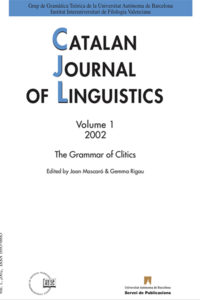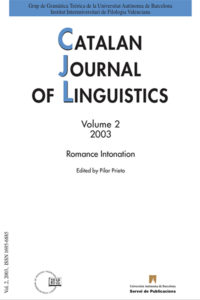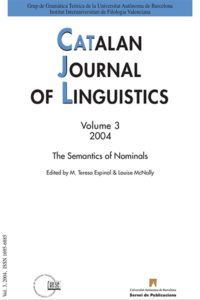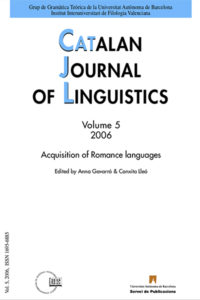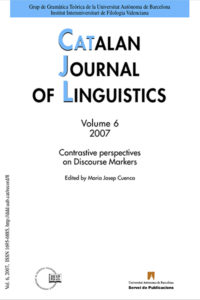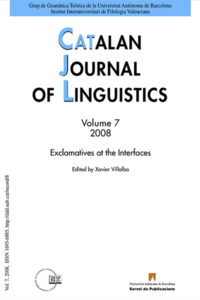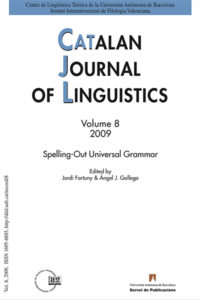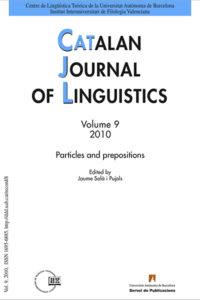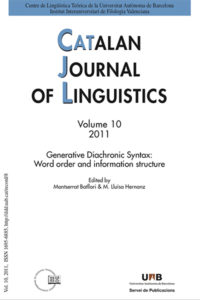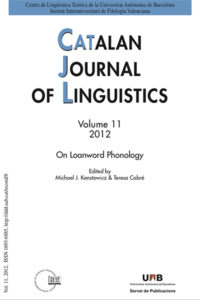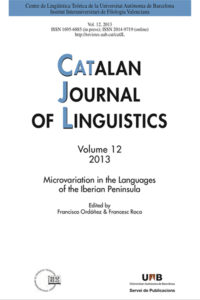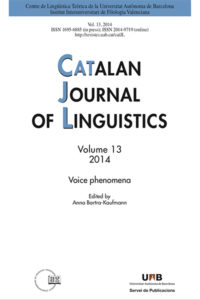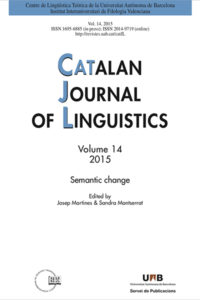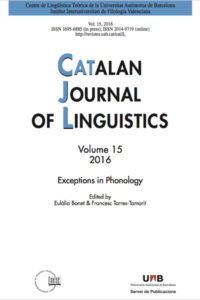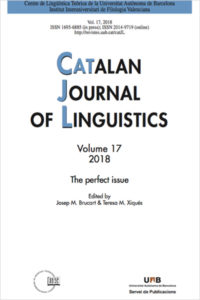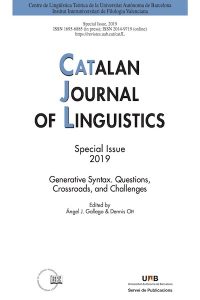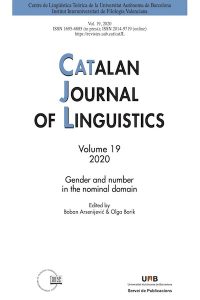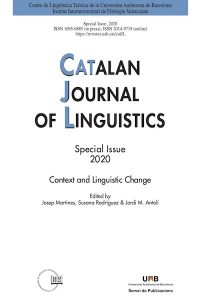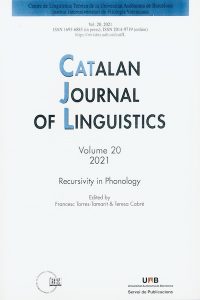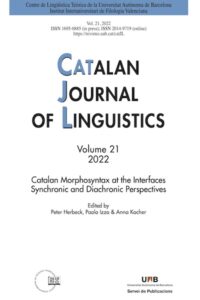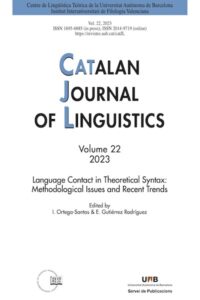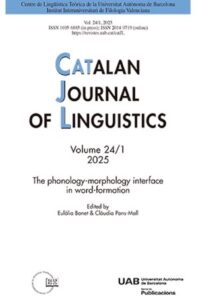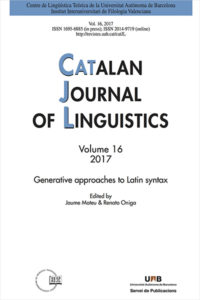6 febrer, 2017
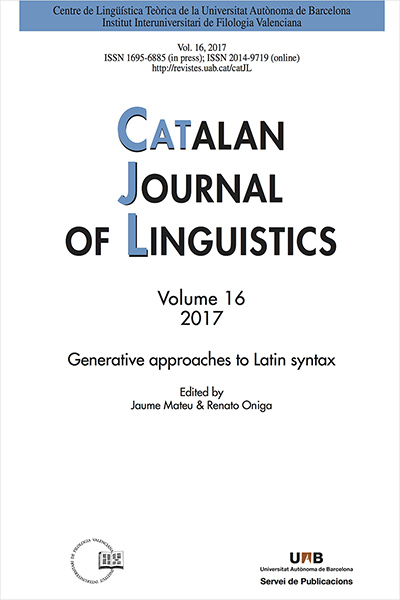
Autors:
Mateu, Jaume & Renato Oniga (eds.)
Títol:
Generative Approaches to Latin SyntaxEditorial: Bellaterra: Servei de Publicacions de la UAB
Col·lecció: Catalan Journal of Linguistics #16Data de publicació: 2017
Pàgines: 216 Text completFifty years have passed since the first attempt to apply generative grammar methods to Latin syntax. The well-known book by Robin Tolmach Lakoff, published in 1968 by the MIT Press with the title of Abstract Syntax and Latin Complementation, was presented as a dissertation in linguistics at Harvard University in 1967, with the title of Studies in the Transformational Grammar of Latin. The Complement System. In order to celebrate its fiftieth anniversary, we thought it was appropriate to publish a collection of papers written by some distinguished specialists who approach the study of Latin syntax from a generative perspective. Their works show the important research that is being currently carried out in this active field. In this introduction, we would like to briefly trace the development of this research area, trying to emphasize elements of continuity, changes, results, and problems. Although generative grammar has provided very important contributions to phonology and morphology as well, it is nonetheless clear that, from the very beginning, its theoretical focus has been on syntax.
Títols de la col·lecció / Also in this series:
6 febrer, 2018

Autors:
Brucart, Josep M. & Teresa Xiqués (eds.)
Títol:
The perfect issueEditorial: Bellaterra: Servei de Publicacions de la UAB
Col·lecció: Catalan Journal of Linguistics #17Data de publicació: 2018
Pàgines: 177 Text completThis volume studies perfect constructions across languages and pays special attention to perfectivity and its relation to the perfect. The issue aims to explore the relation between telicity/perfectivity and the perfect, some points of contrast between the perfect and (im)perfective markers, temporal readings of the perfect and its different degrees of remoteness, the existence of the aoristic drift, present tense lengthening in the perfect, among other topics linked to both notions.
Títols de la col·lecció / Also in this series:
18 desembre, 2019
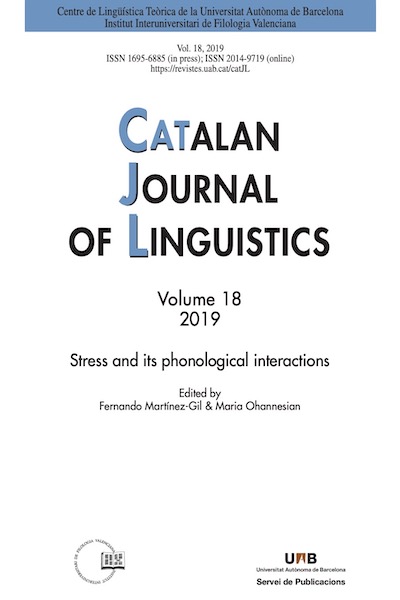
Autors:
Fernando Martínez-Gil & Maria Ohannesian (eds.)
Títol:
Stress and its phonological interactionsEditorial: Bellaterra: Servei de Publicacions de la UAB
Col·lecció: Catalan Journal of Linguistics #18Data de publicació: 2019
Pàgines: 218 Text completThe articles that make up this volume deal with a variety of issues related to primary and secondary stress assignment, including the interaction of stress with sonority, vowel changes in Latin, stress shift in verb+clitic groups, the role of stress in truncation and loanword adaptation, and stress location in prominence augmentation strategies.
Títols de la col·lecció / Also in this series:
17 desembre, 2019
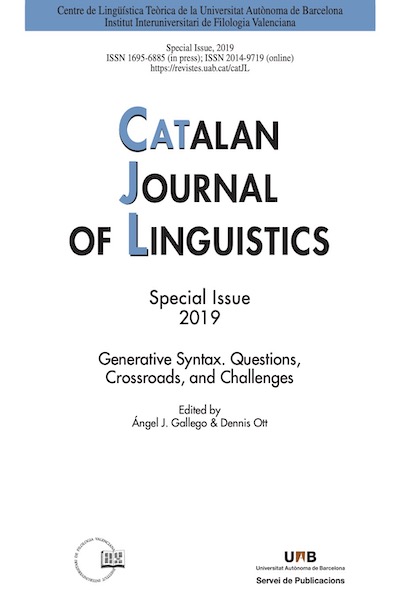
Autors:
Gallego, Ángel J. & Dennis Ott
Títol:
Generative Syntax. Questions, Crossroads, and ChallengesEditorial: Bellaterra: Servei de Publicacions de la UAB
Col·lecció: Catalan Journal of Linguistics #2019 SpecialData de publicació: 2019
Pàgines: 288 Text completThis special issue of the CJL grew out of a workshop that took place at the UAB in the summer of 2017. The declared goal of the event was to reconsider the questions that motivate Generative Grammar and the answers given thus far, the crossroads that its practitioners must navigate, and the challenges they face given the current state of the field. These are the issues addressed by the papers collected here.
Títols de la col·lecció / Also in this series:
27 gener, 2021
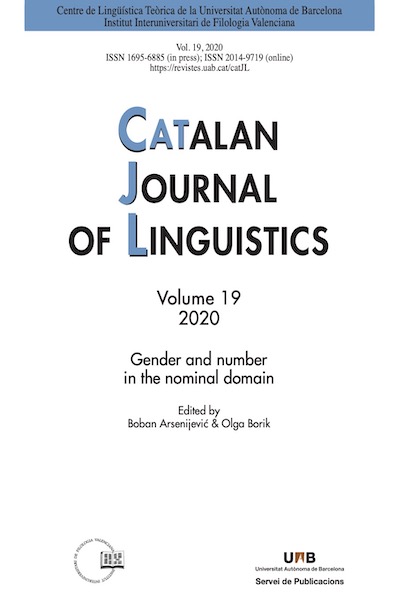
Autors:
Arsenijević, Boban & Olga Borik
Títol:
Gender and number in the nominal domainEditorial: Bellaterra: Servei de Publicacions de la UAB
Col·lecció: Catalan Journal of Linguistics #2020Data de publicació: 2020
Pàgines: 260 Text completGrammatical gender and number have been studied from a variety of theoretical viewpoints and still there is no commonly established and well-defined view on the nature of the two categories. The term ‘gender’ is used for a range of grammatical phenomena, including noun-classification into corresponding inflection classes and syntactically conditioned rules of agreement and concord. Like grammatical gender, grammatical number can be realized through inflection on the noun and/or through the agreement that it triggers on other items. However, unlike grammatical gender, grammatical number has stable, straightforward and systematic interpretive effects, related to the quantity of the predicate denoted by the noun, and hence also of the referent when the nominal expression is referential. Number and gender are core features of nouns and make up or participate in some of the hallmark properties of natural language.
Títols de la col·lecció / Also in this series:


